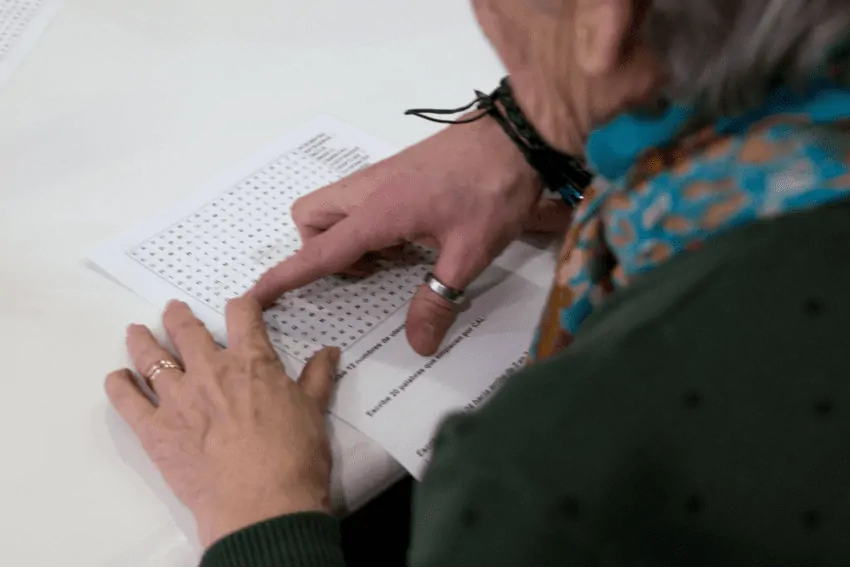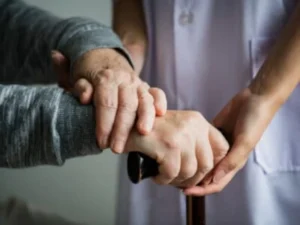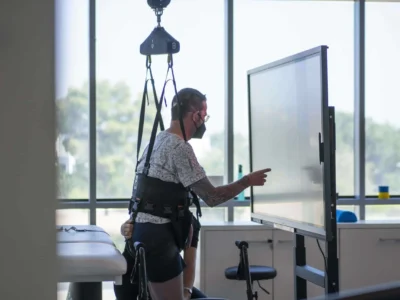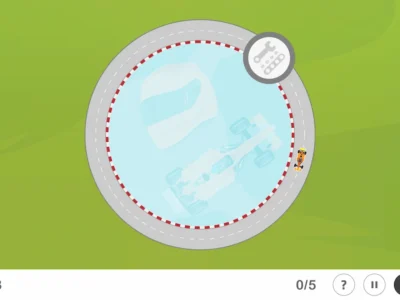Parkinson’s disease is a neurodegenerative disorder that affects muscle movement and the central nervous system. Among the functions it affects, there are two of vital importance: communication and swallowing. These two areas are addressed through speech therapy, with the language area being fundamental in Parkinson’s disease so that the patient can communicate and does not see their quality of life deteriorate.
Parkinson’s disease
Parkinson’s disease is a neurodegenerative disorder that was discovered in 1817 by physician James Parkinson. And, in 1997, the World Health Organization (WHO) established April 11 as World Parkinson’s Day.
Through a chronic process, Parkinson’s progressively degenerates and destroys the dopaminergic neurons, which are responsible for transmitting dopamine, necessary for muscle movement and the central nervous system. This implies neuronal cell death from the brainstem to the cerebral cortex. As a result, the person experiences altered functions: sensorimotor control, balance, gait, autonomic function, mood, cognition, communication (language in Parkinson’s and facial expression) and swallowing (the passage of food or other substances from the mouth to the stomach).
The disease affects each person differently. There are different pharmacological treatments and palliative treatments to control muscular symptoms, which are handled by professionals in physical therapy; and symptoms at the communication level, which are treated from the area of speech therapy, specifically language in Parkinson’s. The goal of both therapies is to improve the patient’s quality of life.

How does Parkinson’s affect speech?
Up to 90% of people with Parkinson’s experience speech and voice disorders at some point during the course of the disease. Therefore, language in Parkinson’s is affected. The most common symptoms include reduced voice intensity, monotony, hoarseness, breathy voice and imprecise articulation. The exact cause of these symptoms is not known. Their origin may be related to rigidity, slowness and reduced amplitude of movements, characteristics inherent to the disease.
These people may not be aware that their voice is becoming weaker and their speech increasingly unpredictable and harder to understand, having more imprecise and indecipherable language in Parkinson’s. All of this has a negative impact on them and affects their communication at work, with family and in their social environment.
Therefore, a symptom assessment performed by a speech therapist is necessary so that rehabilitation can begin as soon as possible.
What does speech therapy for Parkinson’s disease involve?
Speech therapy in Parkinson’s works in two fundamental areas: language in Parkinson’s, with the aim of improving affected individuals’ communication; and swallowing techniques.
Techniques to improve language in Parkinson’s
On the one hand, fundamentally, people with Parkinson’s learn techniques so they are better understood when they speak, since language in Parkinson’s is deteriorated by the disease. These techniques to improve language in Parkinson’s are: relaxation, breathing, phonation and articulation exercises, and they constitute the basis of speech therapy intervention.
- The training of vocal cord relaxation prevents overload and voice fatigue. In this way, the patient can make full use of their voice, which improves language in Parkinson’s.
- Breathing exercises stimulate and raise awareness of the respiratory cycle for phonation (nasal-oral, oral-nasal). This helps maintain vocal hygiene and prevents mild alterations in language in Parkinson’s.
- Phonation exercises are those with which we re-educate the voice to produce it at the appropriate pitch. In this way, we reduce vocal cord fatigue and improve language in Parkinson’s.
- Phoneme articulation exercises are aimed at re-educating the articulation of certain phonemes and reducing the loss of tonicity that affects language in Parkinson’s. In this way, we improve pronunciation and, therefore, the patient’s communication with others.
Swallowing problems and techniques
They are also given information and taught techniques to eat safely, avoiding aspiration that can lead to pneumonia, malnutrition and dehydration. These difficulties are common and can appear at different stages of the disease, varying in their course and worsening as symptoms progress. The symptoms include: choking, coughing, drooling, difficulty taking pills, increased time required to eat, weight loss and pneumonia.
Language in Parkinson’s
Language in Parkinson’s is not only affected functionally and worsens the patient’s verbal communication with others, but non-verbal communication is also affected, that which is manifested through gestures, expressions or body movements.
Facial expression
It is very common for these people to show difficulty with facial expression, also called hypomimia or poker face. Over time they begin to have difficulty moving the muscles of the face, greatly reducing gesturing and blinking.
Facial expression is a fundamental element in communication, since it conveys the speaker’s feelings regarding their discourse. When this element fails, communication deteriorates, as the speaker’s intent cannot be inferred from their facial gestures and comprehension of language in Parkinson’s becomes more difficult.
Myofunctional therapy
In speech rehabilitation facial expression will be worked on to improve comprehension of language in Parkinson’s, through myofunctional therapy.
This therapy is a discipline that is responsible for preventing, assessing, diagnosing and correcting orofacial dysfunctions that can interfere both with speech production and with the structure of the teeth and jaw relationships.
The main objectives of myofunctional therapy, in the area of language in Parkinson’s, are to reduce speech loss and preserve the tonicity of facial muscles. In this way communication is altered as little as possible and the patient’s quality of life is preserved or improved, since language is a fundamental part of our lives.
The intervention can be active, with voluntary participation of the patient, or passive, without it. This re-education is mainly based on specific exercises, through praxis exercises, massages, mechanical stimulation, postural control, etc. Its purpose is to achieve an orofacial muscular balance that allows the establishment of appropriate neuromotor behavior patterns of the orofacial system.
Conclusions
Language in Parkinson’s is one of the functions that is altered and it is important to carry out treatment, both preventive and re-educational, so that the patient has an acceptable quality of life. On the other hand, preventing the loss of tonicity in the facial muscles in combination with therapy aimed at correct swallowing not only improves quality of life, but also prevents other symptoms and diseases derived from incorrect swallowing, which can affect the patient’s life expectancy.
Consequently, we can state that speech therapy treatment not only improves the patient’s quality of life, but can also extend it.
If you liked this post about speech therapy and language disorders in Parkinson’s, you might be interested in these publications from NeuronUP:
“This article has been translated. Link to the original article in Spanish:”
La logopedia y los trastornos del lenguaje en Parkinson







 5 Activities to Improve Executive Functions
5 Activities to Improve Executive Functions
Leave a Reply